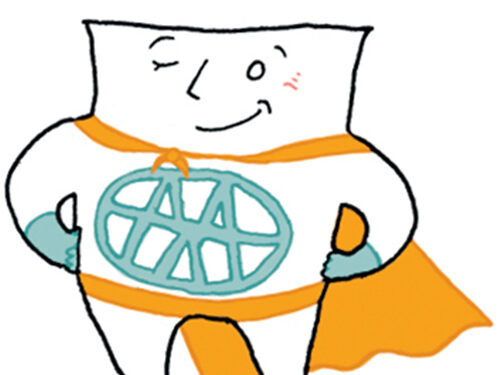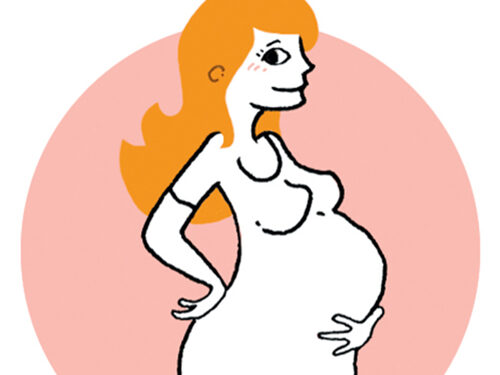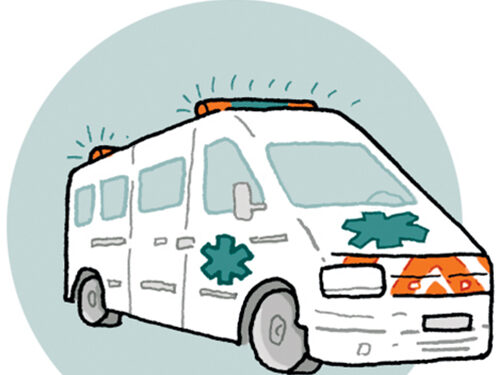Your dietary plan
For a newborn baby
Don’t worry, you can have your child looked after as long as you explain what the diet is and why it is important, without worrying people, as long as there is no acute risk. The full support of the person(s) looking after your child, and your trust in them, is essential. In the beginning, before diversification, it is often easiest if you bring the bottles yourself, already prepared.
Explain that it is important for your child to take his or her own bottles and not those of a ‘buddy’. Make an appointment with the director of the crèche (if this is the childcare arrangement) so that she can make the nursery nurses in the different teams aware of your child’s special diet from the start.
Your baby is not at risk of anything other than a rise in blood levels if there has been a mistake with a bottle or if he or she is not eating enough (which should not happen or be repeated) but you will know what your baby’s feeding has been like during the day from the correspondence booklet and by talking to the childminders when you pick him up.
For a small child
Dietary diversification for an ECP toddler will begin at about 4-6 months of age, as for any other child. Fruits and vegetables will be introduced at the same age, but the phenylalanine intake they represent will be accounted for by you within the prescribed total daily amount.
As with any child, introduce 1 new food at a time (a new vegetable or fruit) at regular intervals. However, each case is different and the dietician will guide you throughout this period. If your child likes to be spoon-fed, it is possible that he or she no longer wants the entire amino acidAmino acids are molecules that combine to form proteins. 20 amino acids make up the proteins of the human body. Of these, 8 are essential (our body cannot synthesise them, they must be supplied by the diet): isoleucine, leucine, lysine, methionine, phenylalanine, threonine, tryptophan, valine.
Arginine and histidine are semi-indispensable. In fact, only infants need to take them from their food.
Cysteine, glycine and tyrosine may be indispensable for certain populations mixture in the bottle. However, the prescribed amounts should be taken in full, every day. This does not mean that the child should be forced to take all of the amino acids or that the child should not be given them.
Ask your dietician if it is possible to offer him/her a more concentrated form or another form: in a porridge, in fruit, etc., or by changing the amino acidAmino acids are molecules that combine to form proteins. 20 amino acids make up the proteins of the human body. Of these, 8 are essential (our body cannot synthesise them, they must be supplied by the diet): isoleucine, leucine, lysine, methionine, phenylalanine, threonine, tryptophan, valine.
Arginine and histidine are semi-indispensable. In fact, only infants need to take them from their food.
Cysteine, glycine and tyrosine may be indispensable for certain populations mix. If your child is being looked after, explain to the carer:
- that he must take his amino acidAmino acids are molecules that combine to form proteins. 20 amino acids make up the proteins of the human body. Of these, 8 are essential (our body cannot synthesise them, they must be supplied by the diet): isoleucine, leucine, lysine, methionine, phenylalanine, threonine, tryptophan, valine.
Arginine and histidine are semi-indispensable. In fact, only infants need to take them from their food.
Cysteine, glycine and tyrosine may be indispensable for certain populations mixture; - that he is allowed vegetables and fruit, but in certain quantities. You can provide them with the amino acidAmino acids are molecules that combine to form proteins. 20 amino acids make up the proteins of the human body. Of these, 8 are essential (our body cannot synthesise them, they must be supplied by the diet): isoleucine, leucine, lysine, methionine, phenylalanine, threonine, tryptophan, valine.
Arginine and histidine are semi-indispensable. In fact, only infants need to take them from their food.
Cysteine, glycine and tyrosine may be indispensable for certain populations blend, at least at first, and then teach them, if you trust them, the equivalency system.

Give a list of forbidden foods so that they are not offered to your child and explain to them why, without alarming them. If the child does not finish his or her plate, ask how much was left over and adjust the intake for the evening meal.
During mealtimes it is important that your child is not “left out” of the care of other children, but supervision should be close to avoid food exchanges. Simple explanations will allow children to understand the situation and to accept differences. This will facilitate your child’s socialisation.
Insist on the fact that the diet is not a slimming or diabetic “diet”… And that the foods used must be normal foods and not “low-fat” or “light” foods in terms of both fat and sugar. It should be noted that ASPARTAME, which is used to sweeten compotes, fruit juices and “light” sodas, is none other than a precursor of phenylalanine ! It is therefore prohibited.
Food Education
Also give a supply of cakes or low protein foods so that if other children are being looked after at the same time as yours, there can be ‘compensation’ for what cannot be given.
Children are very curious and it is important to stimulate their curiosity. Take advantage of the fact that they want to become independent to encourage them and talk to them about their food.
Go to the market with your child, and let them choose fruits and vegetables by name and orient them to the variety. Fruit and vegetables are and will be the basis of his diet, the earlier he tries different tastes, textures and colours, the more he will accept different dishes and the easier and more accepted the diet will be.
If you are in the supermarket, and there is a promotion on sausage or pâté, or other forbidden foods, explain that he cannot eat them but give him an opening on another food (fruit paste, sour candy or small fruit…).
Meals are very important moments in the social development of the child. Whenever possible, they should be eaten as a family. Design meals for your child that are as close as possible to those of the rest of the family.
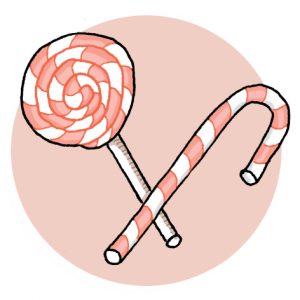
You can include in the menus, dishes that the whole family can eat, by estimating the number of portions that this represents for your child. The family is a help: if there are older brothers or sisters, he will learn how to eat by watching them. Siblings can encourage him, but they also need to be educated!
If there are no siblings, eat with him; don’t tell yourself that when he eats alone, well supervised, you apply the diet better; on the contrary, this will be part of his education, he must learn that he cannot eat like others but that he can have a normal social life. When he starts to use the spoon on his own, let him be clumsy, to drop some pieces of food around the plate, do not overprotect him; he risks to make “whims”, going as far as tantrums, only by opposition reaction.
He may refuse to eat or he may steal to ‘test’ you, which is normal, as he knows that food is a way to get your attention. You have to put up barriers, as you would for any other child. This is about educating your child.
“The earlier a child is educated, the better the diet will be accepted and followed. “
Let him or her get involved with cooking as soon as possible. If your child gets involved, he or she will get interested and want to try new foods.
Make the most of textures, smells and colours. Let your child prepare recipes as soon as he or she is capable of doing so.
Vary the dishes as much as possible, which are all based on vegetables and/or fruit, to avoid boredom with this type of diet.
Use spices, herbs, sauces based on vegetable broth, white wine, chicken juice, meat juice (beware, this can give the PKU child a meaty taste, which can lead to frustration with meat deprivation due to their diet, opinions differ from one parent to another on this subject!), it will flavour the dishes differently
You can have a cupboard, at his height, with authorised foods so that there are not only prohibitions and therefore risks of “pilfering”.
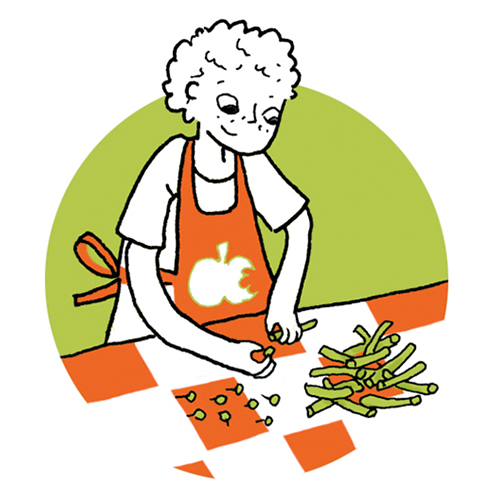
In the community (after having drawn up an Individualised Welcome Project), bring your child’s “packed lunch” as close as possible to the canteen menu, as this is a period of “temptation”, and pass on the message that he/she must be confronted with others and therefore must not eat in isolation (with supervision, of course). If necessary, the paediatrician and dietician who follow your child can intervene!
If there are birthdays, workshops… offer to provide the ingredients and/or the cake so that your child can share with the other children; your child’s food is in no way “bad” for the others, and he or she will feel less “different” and even proud to be able to share!
If there are family parties (with a buffet), don’t exclude them, guide them so that they can choose the food they are entitled to from the buffet: raw vegetables, fruit, sorbets, sweets, etc. They will gradually get into the habit of asking you if they can eat a certain food and thus become more responsible. You can also ask for the menu in advance so that you can take the necessary items with you if necessary and avoid any frustration for your child.



